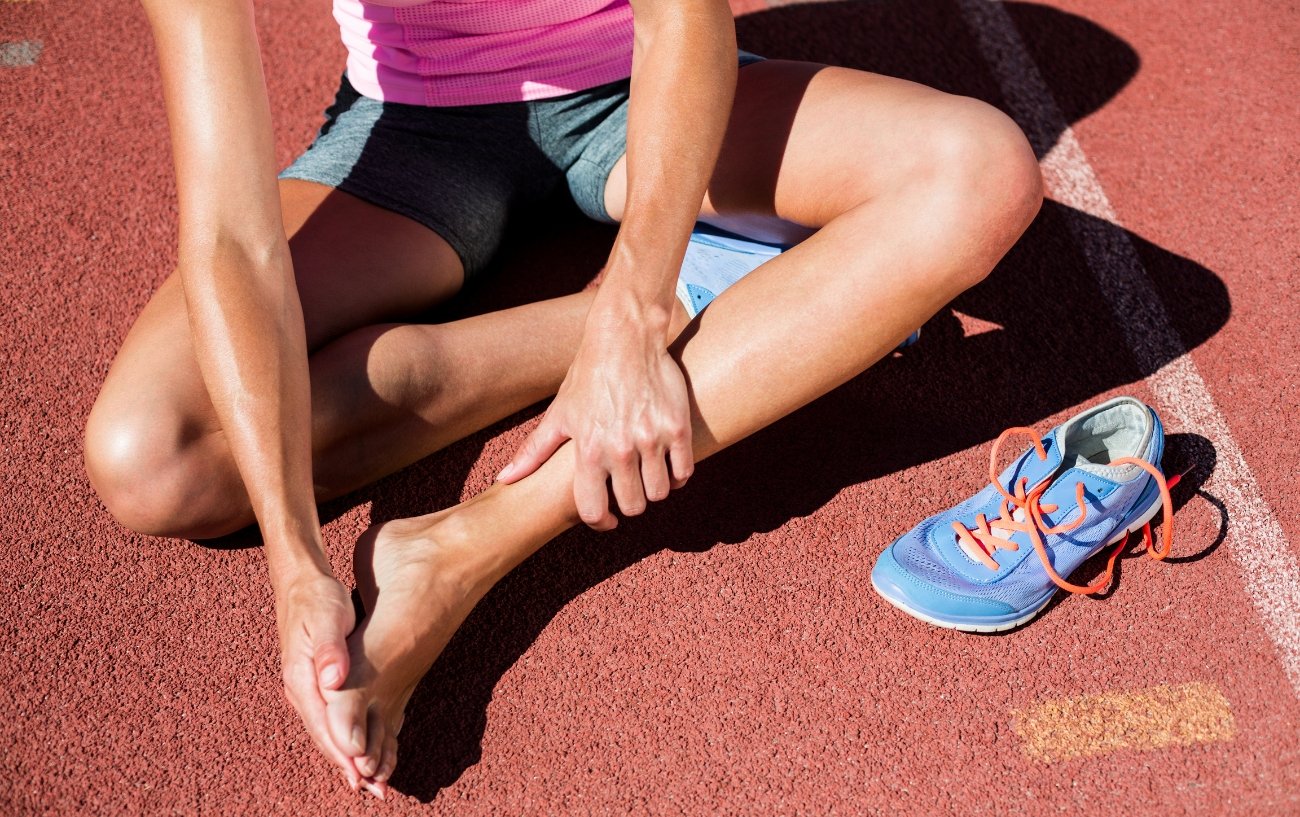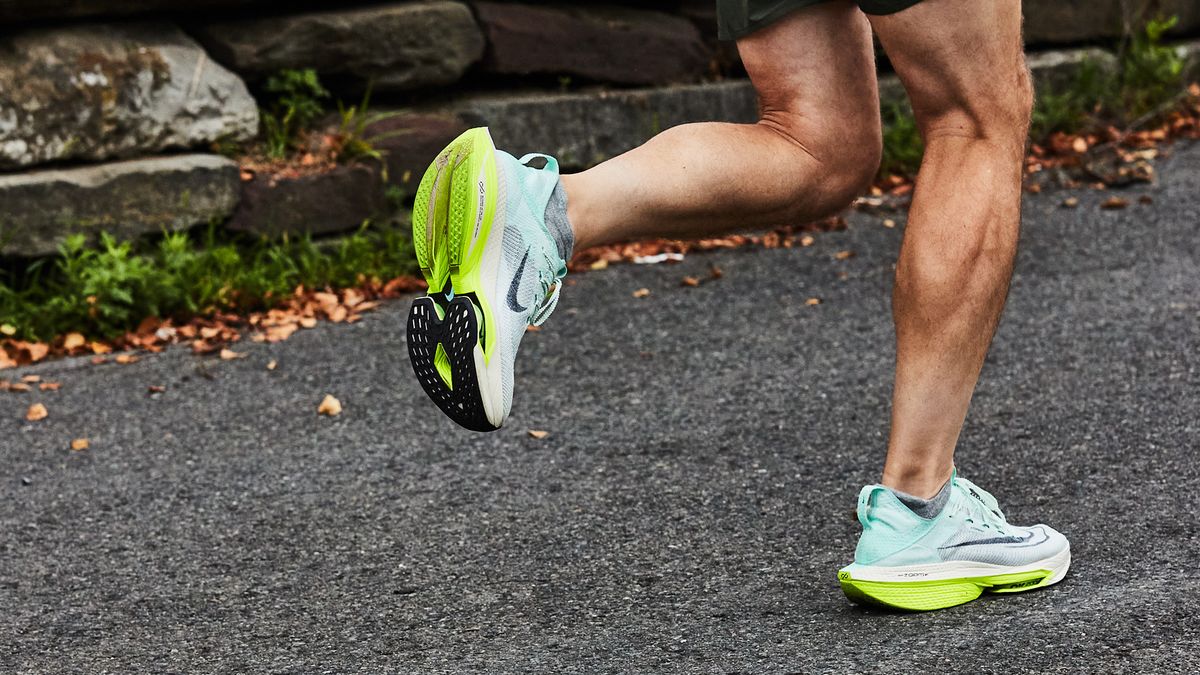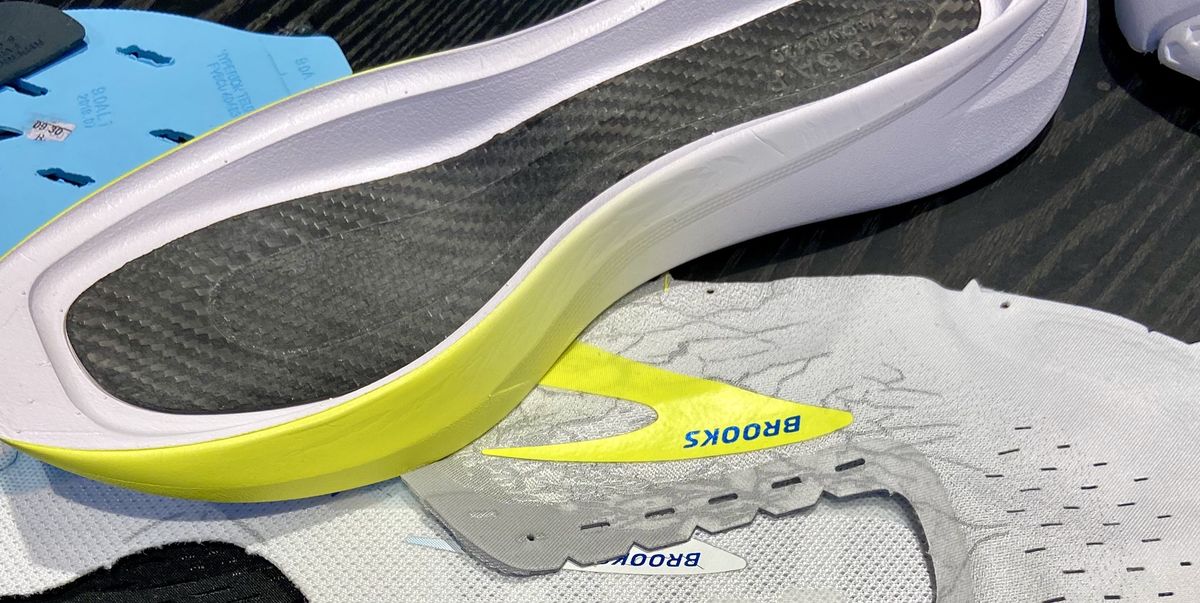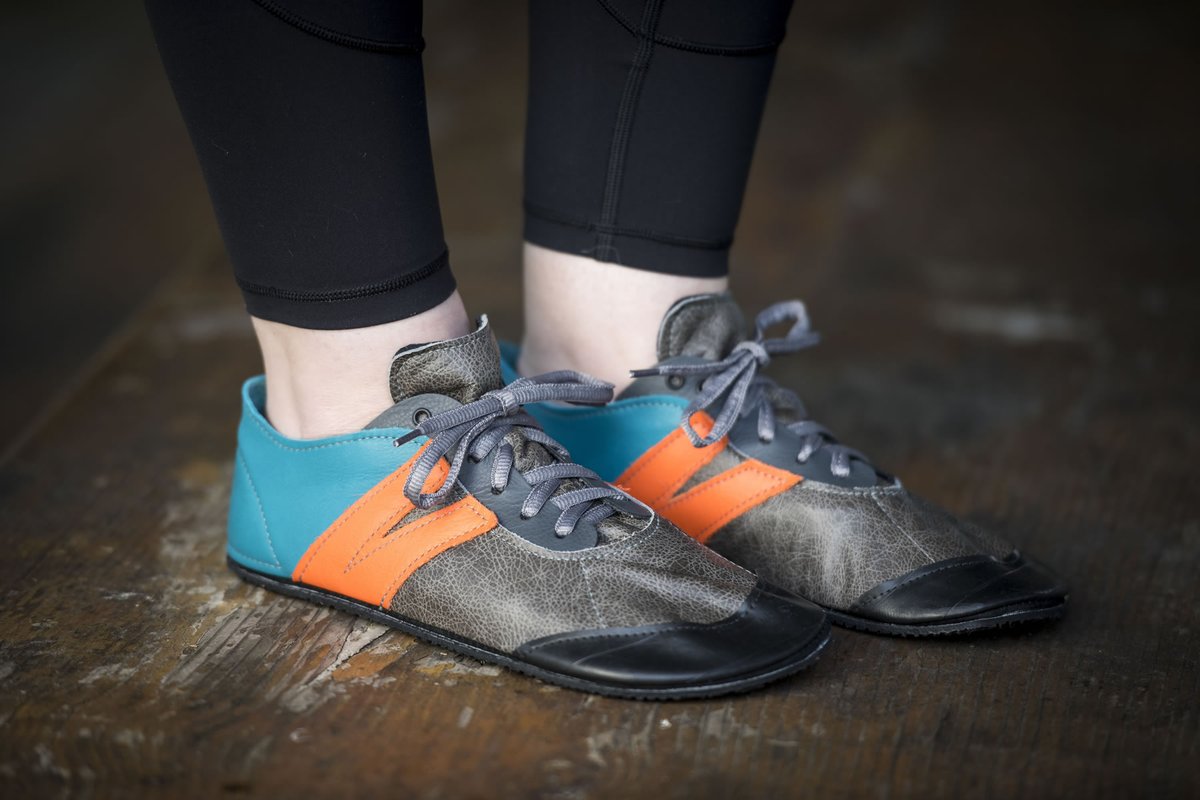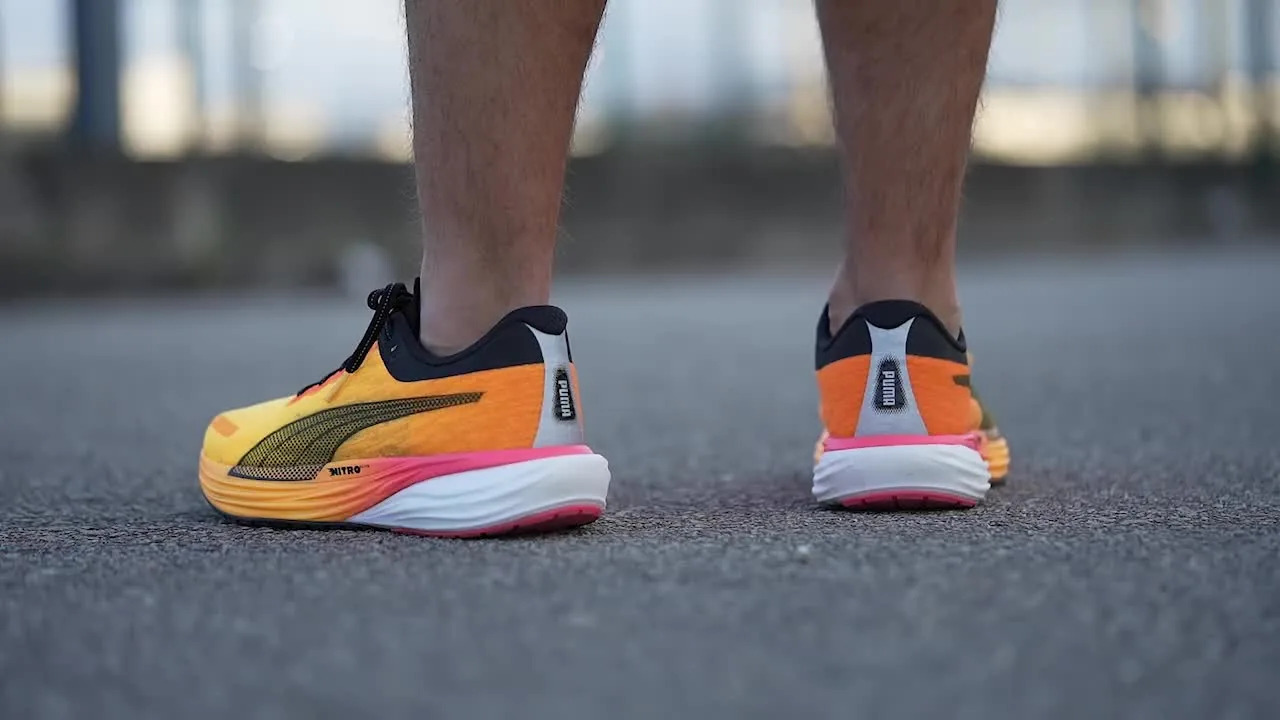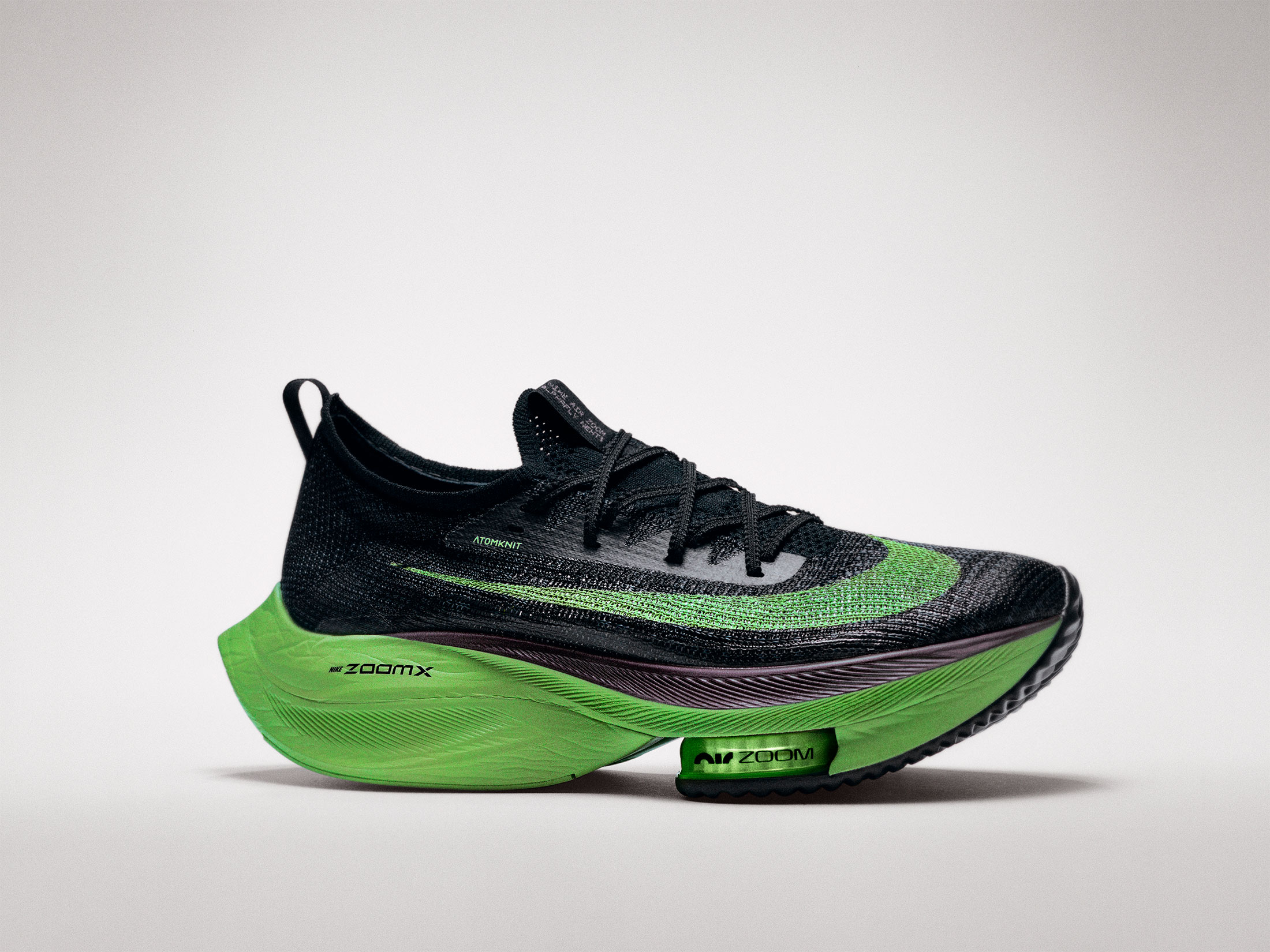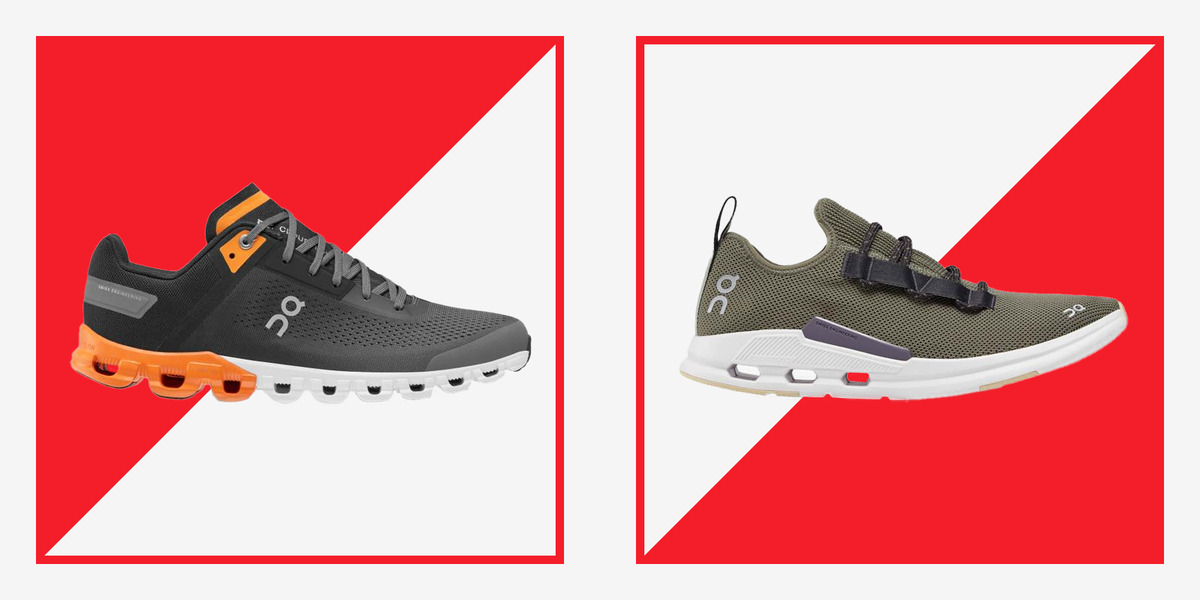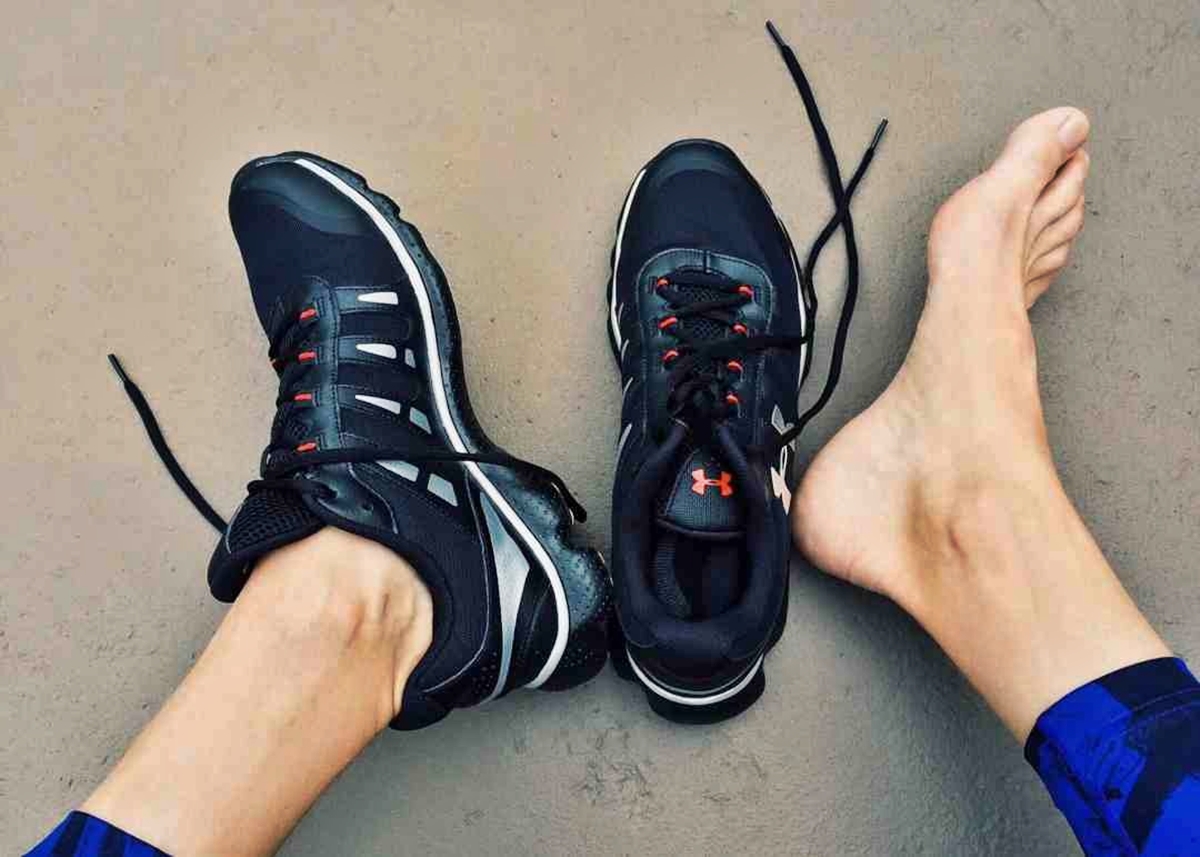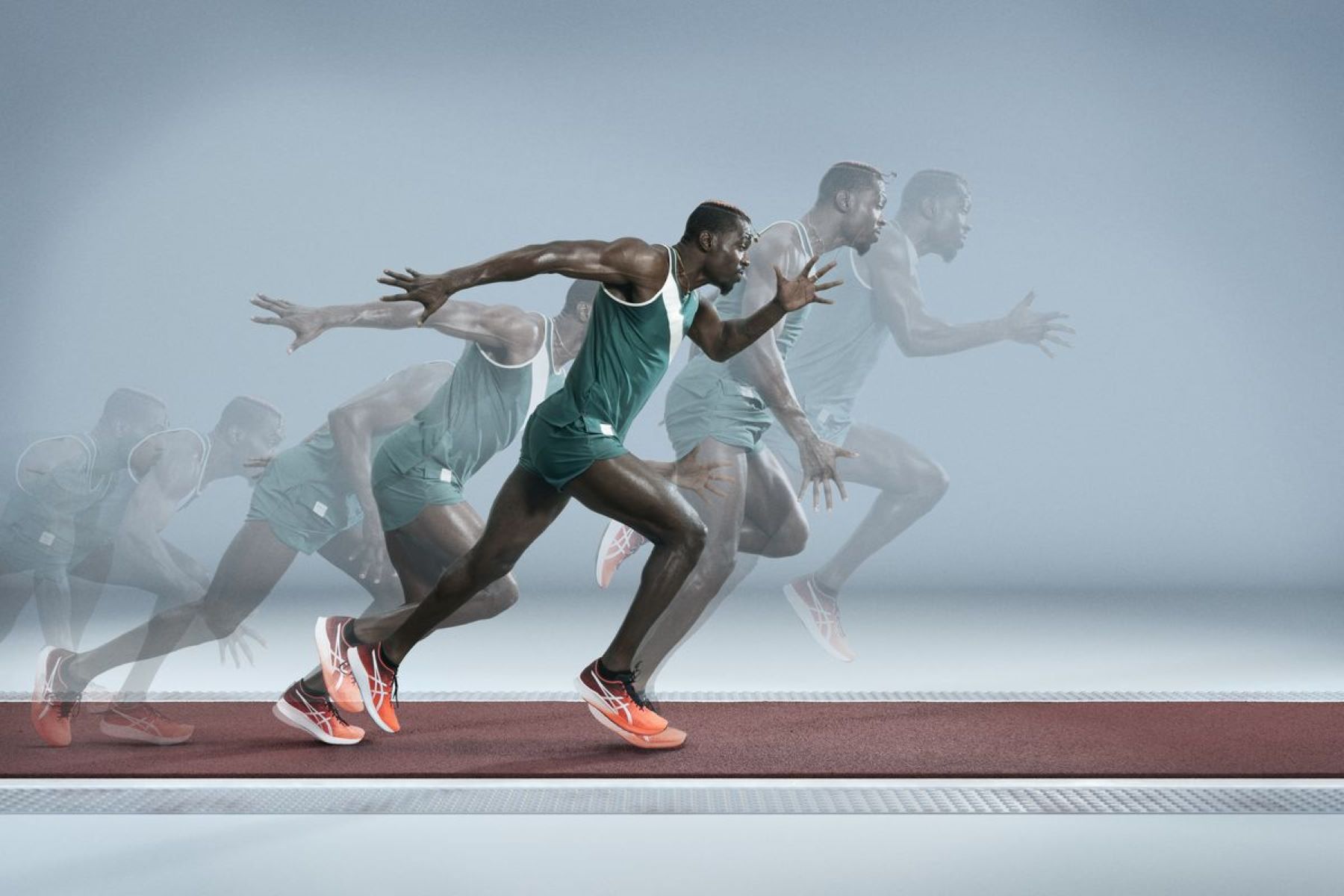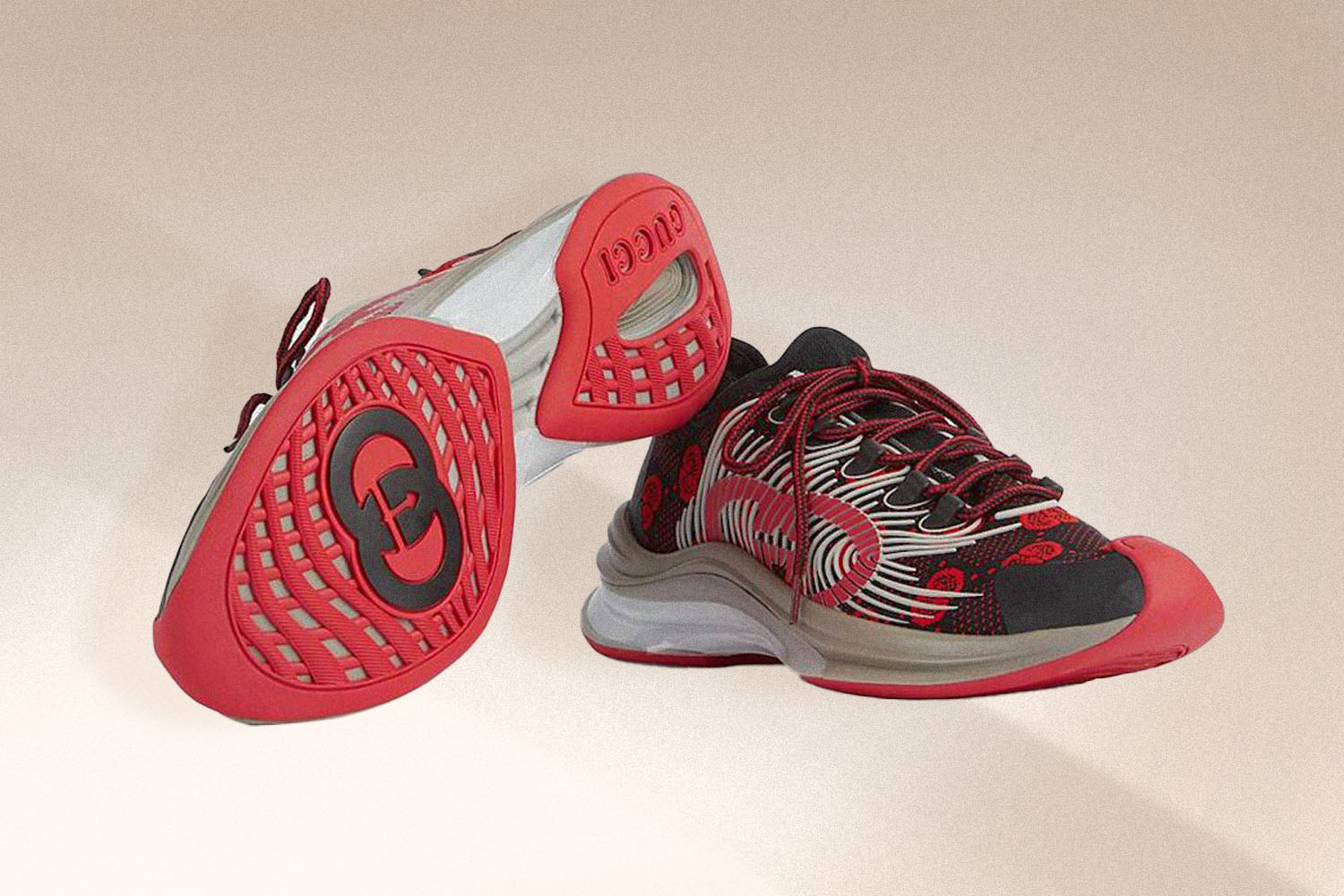

Featured
What Are Running Shoes Made Out Of
Modified: August 18, 2023
Discover what running shoes are made out of and explore the materials used in the featured footwear, designed to provide optimal comfort and support.
Introduction
When it comes to the world of running, having the right pair of shoes is crucial for performance, comfort, and injury prevention. But have you ever wondered what running shoes are made out of? In this article, we will delve into the materials used in the construction of running shoes and explore both natural and synthetic options.
Running shoes are designed to provide support, cushioning, and durability to endure the high impact and repetitive motion of running. Manufacturers meticulously select materials that offer a balance of flexibility, breathability, and stability.
From the upper to the outsole, running shoes are a culmination of various materials that work together to create a shoe that meets the demands of runners. Some materials are chosen for their natural properties, while others are engineered for specific purposes.
Understanding the materials used in running shoes can help runners make informed decisions when selecting their next pair. It allows them to consider factors such as comfort, durability, and performance enhancement.
In the next sections, we will explore the specific materials used in various parts of the shoe, including the upper, midsole, outsole, insole, and laces. We will also discuss the different types of materials used for cushioning and their role in providing a responsive and supportive ride.
So, if you’re curious about what goes into the construction of running shoes and want to know how each material contributes to your running experience, keep reading!
Natural Materials Used in Running Shoes
When it comes to using natural materials in the construction of running shoes, manufacturers often prioritize sustainability, breathability, and comfort. Here are some commonly used natural materials in running shoe production:
1. Leather: Leather has been a popular choice for shoe uppers due to its durability and natural breathability. It offers excellent support and can conform to the shape of the foot over time. However, leather is not frequently used in running shoes today due to its relatively heavier weight and limited flexibility compared to synthetic materials.
2. Cotton: Cotton is commonly used in the lining or inner parts of running shoes for its softness and absorption properties. It helps wick away moisture and provides a comfortable, sweat-free environment for the feet. However, cotton has its limitations, as it tends to retain moisture and can take longer to dry compared to synthetic materials.
3. Hemp: Hemp is an eco-friendly material that has gained popularity in sustainable running shoe production. It is known for its strength, breathability, and natural antimicrobial properties. Hemp fibers are lightweight and durable, making them ideal for upper construction.
4. Cork: Cork is often used in the midsole or footbed of running shoes to provide cushioning and shock absorption. It is a natural, renewable material that is lightweight, antimicrobial, and mold-resistant. Cork also offers excellent energy return and stability.
5. Rubber: While rubber is not entirely natural, it is derived from the sap of rubber trees, making it a partially natural material. It is extensively used in the outsole of running shoes for its excellent traction, flexibility, and durability. Rubber outsoles provide grip and traction on various surfaces, ensuring a secure footing while running.
These natural materials have their unique benefits, but they are often combined with synthetic materials to enhance performance, durability, and flexibility. The use of natural materials in running shoes aligns with environmentally conscious practices and contributes to the sustainable production of athletic footwear.
In the next section, we will explore the synthetic materials commonly used in running shoe construction and their advantages in meeting the specific demands of runners.
Synthetic Materials Used in Running Shoes
In addition to natural materials, running shoe manufacturers rely heavily on synthetic materials to create high-performance footwear. Synthetic materials offer a range of benefits, including lightweight construction, enhanced durability, and advanced features. Here are some commonly used synthetic materials in running shoe production:
1. Mesh: Mesh is a popular choice for the upper of running shoes due to its breathability and flexibility. It allows air to circulate inside the shoe, keeping the feet cool and preventing excessive sweating. Mesh materials are often engineered to be lightweight and provide a snug, comfortable fit.
2. Synthetic Leather: Synthetic leather, also known as faux leather, is a versatile material commonly used for both the upper and overlays of running shoes. It offers similar qualities as genuine leather, including durability and water resistance. Synthetic leather is more affordable and vegan-friendly, making it an ethical alternative to animal-derived materials.
3. EVA (Ethylene Vinyl Acetate): EVA is a lightweight, flexible, and shock-absorbing material commonly used in the midsole of running shoes. It provides cushioning and support for the foot, helping to reduce the impact of each stride. EVA also offers excellent energy return, enhancing the responsiveness of the shoe.
4. TPU (Thermoplastic Polyurethane): TPU is a durable and abrasion-resistant material often used in the overlays and outsole of running shoes. It provides stability, support, and protection to high-wear areas, ensuring the shoe withstands the rigors of running. TPU also offers excellent traction, allowing runners to maintain a secure grip on various surfaces.
5. Carbon Fiber: Carbon fiber is a high-performance material used in the construction of running shoe plates or inserts. It is incredibly lightweight and offers exceptional strength and stiffness. Carbon fiber plates are known for their energy-efficient properties, promoting a more efficient running gait and enhancing propulsion.
The use of synthetic materials in running shoes allows for advanced technologies and innovative designs that can enhance a runner’s performance. These materials are often engineered for specific purposes, such as stability, flexibility, and support, ensuring that runners can enjoy optimal comfort and protection during their runs.
In the next sections, we will explore the different parts of a running shoe and the specific materials used in their construction, including the upper, midsole, outsole, insole, laces, and cushioning materials.
Upper Materials
The upper of a running shoe is the part that covers the top of the foot and provides support, flexibility, and protection. It plays a crucial role in determining the fit and feel of the shoe. Manufacturers use various materials for the upper, each with its own unique properties. Here are some common upper materials used in running shoes:
1. Mesh: Mesh is a lightweight, breathable material that is highly popular in running shoe uppers. It allows air to circulate inside the shoe, preventing overheating and keeping the feet dry. Mesh also offers flexibility and a comfortable fit, as it can stretch to accommodate the natural movement of the foot during running.
2. Synthetic Overlays: Synthetic overlays are often added to the upper to provide structure, support, and durability. These overlays are typically made from synthetic materials like TPU or synthetic leather. They help enhance the stability of the shoe, particularly in areas that are prone to wear and tear, such as the toe box and heel counter.
3. Flyknit: Flyknit is a proprietary technology introduced by Nike that uses a single strand of yarn to create a knitted upper. This construction method allows for a seamless and sock-like fit, reducing irritation and providing a lightweight, breathable, and supportive feel. Flyknit uppers are known for their flexibility and adaptive fit.
4. Knit: Knit materials have gained popularity in recent years due to their comfort and aesthetics. These uppers are made by knitting yarns together, forming a breathable and stretchable fabric. Knit uppers provide a snug and sock-like fit, while also allowing for adequate airflow and natural foot movement.
5. Synthetic Leather: Synthetic leather, also known as leatherette or faux leather, is a synthetic alternative to genuine leather. It is used in some running shoe uppers for its durability, water resistance, and aesthetic appeal. Synthetic leather can mimic the look and feel of genuine leather while being more affordable and easier to maintain.
The choice of upper material depends on a runner’s specific needs and preferences. Some may prioritize breathability and lightweight materials, while others may prefer more structure and support. Manufacturers often blend different materials to achieve the desired balance of comfort, flexibility, and durability.
In the next section, we will explore the materials used in the midsole of running shoes and their role in cushioning and shock absorption.
Midsole Materials
The midsole of a running shoe is the layer between the outsole and the upper that provides cushioning, stability, and shock absorption. It is one of the most important components of a running shoe, as it directly impacts comfort, support, and overall performance. Manufacturers utilize various materials in the midsole to achieve different levels of cushioning and responsiveness. Here are some commonly used midsole materials in running shoes:
1. EVA (Ethylene Vinyl Acetate): EVA is a versatile and lightweight foam material widely used in running shoe midsoles. It offers excellent cushioning, shock absorption, and energy return, making it a popular choice among runners. EVA foam can be found in varying densities to provide different levels of cushioning, from soft to firm.
2. PU (Polyurethane): Polyurethane is another foam material used in some running shoe midsoles. It offers durability, stability, and high-density cushioning. PU foam provides more support and responsiveness compared to EVA foam, making it an ideal choice for long-distance running or runners seeking additional stability.
3. TPU (Thermoplastic Polyurethane): TPU is a hybrid material that combines the benefits of both rubber and plastic. It is commonly used in midsole overlays or plates to enhance stability and support. TPU provides a firm yet flexible cushioning platform and helps maintain the shoe’s structural integrity.
4. Pebax: Pebax is a lightweight and resilient thermoplastic elastomer used in some high-performance running shoe midsoles. It offers excellent energy return, allowing runners to conserve and utilize energy more efficiently. Pebax foam provides a responsive and spring-like sensation, enhancing propulsion and speed.
5. Carbon Fiber Plates: In recent years, carbon fiber plates have gained popularity in running shoe midsoles. These plates are thin but incredibly stiff, providing a propulsive and spring-like effect. Carbon fiber plates can enhance energy return and improve running efficiency, particularly in long-distance races or during faster-paced runs.
Manufacturers often combine multiple midsole materials or incorporate proprietary technologies to achieve the desired cushioning, stability, and responsiveness. The choice of midsole material will depend on factors such as the runner’s preferences, running style, and specific performance goals.
In the next section, we will explore the materials used in the outsole of running shoes and their role in providing traction and durability.
Outsole Materials
The outsole of a running shoe is the bottom layer that comes into contact with the ground. It plays a crucial role in providing traction, durability, and protection against wear and tear. Manufacturers carefully select materials for the outsole to ensure optimal grip on various surfaces and long-lasting performance. Here are some commonly used outsole materials in running shoes:
1. Rubber: Rubber is the most common material used in running shoe outsoles due to its excellent grip and durability. It provides traction on both dry and wet surfaces, allowing runners to maintain a secure footing. Rubber outsoles also offer flexibility, allowing for natural foot movement and a comfortable running experience.
2. Carbon Rubber: Carbon rubber is a type of rubber that contains carbon particles, which enhance its durability and resistance to abrasion. It is commonly used in high-wear areas of the outsole to increase longevity. Carbon rubber outsoles provide excellent traction and are well-suited for road running and pavement surfaces.
3. Blown Rubber: Blown rubber is a lightweight and cushioned rubber material often used in the forefoot or high-impact areas of the outsole. It offers a responsive and cushioned feel, enhancing comfort and shock absorption. Blown rubber outsoles provide a good balance of traction and cushioning.
4. Vibram: Vibram is a renowned brand that produces high-performance rubber outsoles. They are known for their durable and versatile designs, offering exceptional traction on a variety of terrains. Vibram outsoles provide excellent grip on trails, making them popular among trail runners.
5. Trail-Specific Traction: Some running shoe models are equipped with trail-specific outsoles that feature aggressive lugs or multidirectional patterns. These outsoles are designed to provide enhanced traction and stability on uneven, muddy, or rocky terrains. They are made of sticky rubber compounds that offer superior grip in challenging trail conditions.
Manufacturers may also incorporate specialized traction technologies or patterns into the outsole design to further enhance performance. The choice of outsole material depends on the type of running and the surfaces the shoe will be used on.
In the next section, we will explore the materials used in the insole and laces of running shoes, as well as their respective roles in comfort and fit.
Insole Materials
The insole, also known as the footbed, is the inner layer of the running shoe that provides cushioning, support, and added comfort. It is the part of the shoe that comes into direct contact with the foot. Manufacturers utilize various materials in the insole to offer a comfortable and customized fit. Here are some commonly used insole materials in running shoes:
1. EVA (Ethylene Vinyl Acetate): EVA foam is a popular choice for insoles due to its lightweight and cushioning properties. It provides a comfortable and responsive feel, conforming to the contours of the foot. EVA foam insoles offer shock absorption and help reduce stress on the feet and joints, enhancing overall comfort during running.
2. Memory Foam: Memory foam is a viscoelastic material that molds to the shape of the foot when pressure is applied and then returns to its original shape once the pressure is removed. This material provides personalized comfort and support, relieving pressure points and reducing fatigue during long runs. Memory foam insoles offer enhanced cushioning and a plush feel.
3. Gel Cushioning: Gel cushioning systems, commonly made from silicone-based compounds, are incorporated into insoles to provide superior shock absorption. The gel absorbs and disperses the impact forces, minimizing the stress on the feet and joints. Gel insoles offer excellent cushioning and are particularly beneficial for runners with sensitive or injury-prone areas.
4. Poron: Poron is a high-density foam material that offers exceptional shock absorption and resiliency. It is known for its durability and ability to retain its cushioning properties over time. Poron insoles provide a comfortable and responsive feel, reducing the risk of foot fatigue and discomfort.
In addition to these specific materials, some running shoe models feature removable insoles that allow runners to customize the level of comfort and support. Runners can replace the standard insoles with orthotic inserts or specialized insoles to address specific foot conditions or enhance support.
The choice of insole material depends on factors such as comfort preferences, pronation style, and potential foot issues. A well-designed insole can significantly improve overall comfort and reduce the risk of injuries during running.
In the next section, we will explore the materials used in the laces and fastening systems of running shoes, as well as their role in providing a secure and adjustable fit.
Laces and Fastening Materials
The laces and fastening system of a running shoe play a vital role in providing a secure and adjustable fit. They ensure that the shoe stays in place during running, preventing discomfort, chafing, and potential injuries. Manufacturers use various materials for laces and fastening systems, each with its own unique properties. Here are some commonly used materials in laces and fastening systems of running shoes:
1. Nylon: Nylon is a durable and lightweight material commonly used for shoelaces. It offers excellent tensile strength and resistance to abrasion. Nylon laces provide a secure fit and are known for their longevity and ability to withstand frequent tightening and loosening.
2. Polyester: Polyester is another synthetic material used in shoelaces. It offers similar durability to nylon but with added benefits such as moisture resistance and colorfastness. Polyester laces retain their shape well and are less likely to stretch over time.
3. Elastic: Elastic laces are popular among runners who prefer a quick and convenient lacing system. These laces are made of stretchable materials like rubber or silicone, allowing for easy slip-on and snug fit without the need to tie knots. Elastic laces provide a comfortable and secure fit, ideal for speed workouts or triathlons.
4. Velcro: Velcro is a hook-and-loop fastening system used in some running shoes, particularly for children’s shoes or shoes designed for easy on and off. It consists of two components – hook tape and loop tape – that adhere to each other when pressed together. Velcro fastening offers a customizable fit and allows for quick adjustments.
5. Boa Closure System: The Boa closure system is a proprietary technology that uses a dial and steel cables to provide a precise and adjustable fit. The dial can be easily turned to tighten or loosen the cables, allowing runners to customize the fit to their liking. The Boa system provides secure and evenly distributed pressure, reducing pressure points and improving comfort.
The choice of laces and fastening materials depends on personal preferences, convenience, and the desired level of adjustability. Runners should select a lacing system that offers a secure fit without causing discomfort or restricting circulation.
In the next section, we will explore the materials used for cushioning in running shoes and how they contribute to a comfortable and responsive ride.
Cushioning Materials
Cushioning is a critical aspect of running shoes, as it helps absorb impact, reduce pressure on the feet and joints, and provide a comfortable and responsive ride. Manufacturers utilize various materials to create cushioning systems that cater to different running styles and preferences. Here are some commonly used cushioning materials in running shoes:
1. EVA (Ethylene Vinyl Acetate) Foam: EVA foam is a versatile and widely used material for cushioning in running shoes. It offers a good balance of cushioning, responsiveness, and durability. EVA foam can be found in different densities to provide different levels of cushioning, from soft and plush to firm and responsive.
2. Polyurethane (PU) Foam: Polyurethane foam is denser and more durable than EVA foam, making it ideal for runners seeking maximum cushioning and support. PU foam provides long-lasting compression resistance and stability. It offers a plush and gentle feel, reducing the impact on joints and providing a smooth ride.
3. Gel Cushioning: Gel cushioning systems, typically made from silicone-based materials, are used to enhance shock absorption and provide targeted cushioning. Gel inserts are strategically placed in the heel or forefoot areas to reduce the impact forces during running. Gel cushioning offers a responsive and supportive feel, particularly for runners with a history of foot or joint issues.
4. Air Cushioning: Air cushioning systems consist of compressed air units placed within the midsole of running shoes. These air units offer lightweight cushioning and shock absorption. Air cushioning provides a responsive and bouncy feel, promoting a more efficient running stride.
5. Foam Composites: Many running shoe models utilize a combination of different foam materials to create innovative cushioning systems. These foam composites aim to deliver a customized balance of cushioning, responsiveness, and durability. By combining multiple materials, manufacturers can optimize the overall performance of the shoe for different types of runners.
The choice of cushioning material depends on personal preferences, running style, and the desired level of cushioning and responsiveness. Runners should opt for a cushioning system that effectively absorbs impact, reduces the risk of injuries, and provides optimal comfort during long runs or high-intensity workouts.
In the next section, we will summarize the key points discussed in this article and emphasize the importance of understanding the materials used in running shoes.
Conclusion
Understanding the materials used in the construction of running shoes is essential for every runner. The materials used in different parts of a running shoe, such as the upper, midsole, outsole, insole, laces, and cushioning, each play a vital role in the overall comfort, performance, and durability of the shoe.
Natural materials, such as leather, cotton, hemp, cork, and rubber, offer unique properties like breathability, support, and sustainability. Synthetic materials, such as mesh, synthetic leather, EVA foam, TPU, and carbon fiber, excel in providing lightweight, flexible, and customizable features.
The choice of materials depends on individual preferences, running style, and specific performance goals. Mesh is ideal for breathability, synthetic overlays provide durability and support, and EVA foam offers cushioning and responsiveness. Rubber outsoles offer excellent traction, while gel cushioning systems absorb shock effectively.
Manufacturers often blend various materials and incorporate proprietary technologies to create running shoes that cater to specific needs and preferences. The right combination of materials enhances comfort, stability, support, and overall performance.
By understanding the materials used in running shoes, runners can make informed decisions when selecting their next pair. They can consider factors such as breathability, cushioning, flexibility, durability, and fit. It is essential to choose a shoe that aligns with individual running goals, ensures optimal comfort, and reduces the risk of injuries.
So, whether you’re a long-distance runner, a trail enthusiast, or a casual jogger, take the time to explore the materials used in running shoes. Find the perfect combination of natural and synthetic materials that will support your feet, enhance your performance, and provide you with the utmost comfort during your runs.
Investing in the right pair of running shoes, tailored to your specific needs, will make a significant difference in your running experience. So lace up, hit the pavement, and enjoy the benefits of your well-informed choice of running shoe materials!
